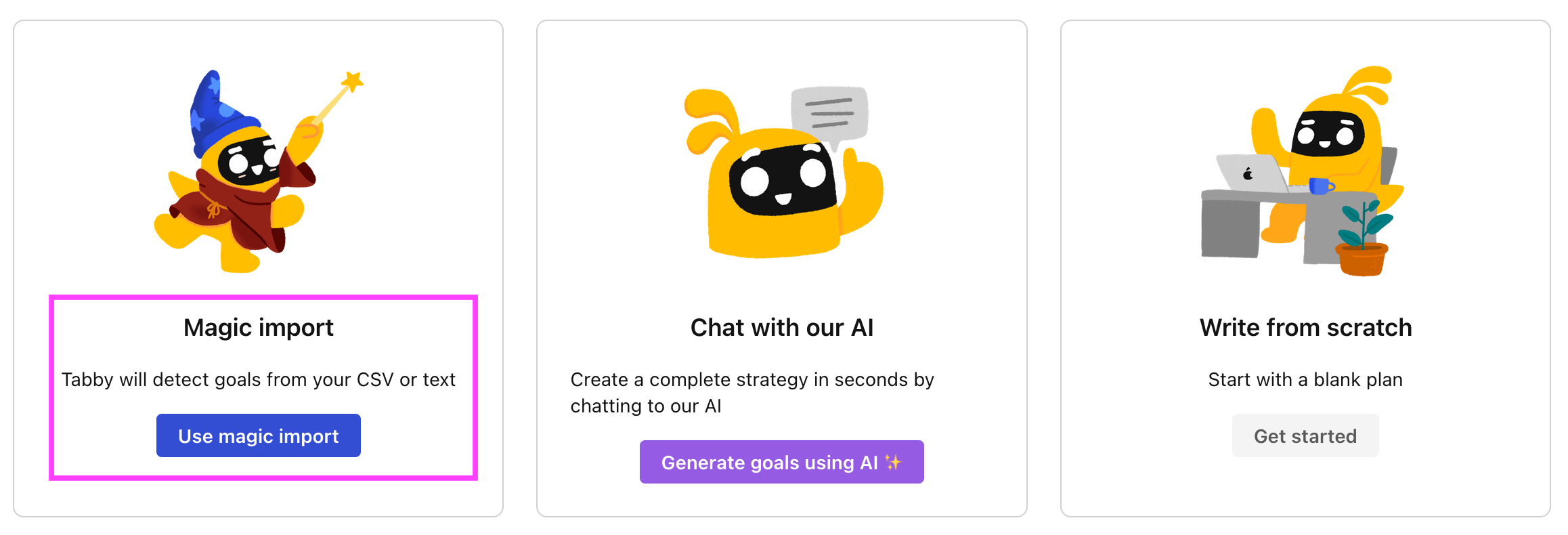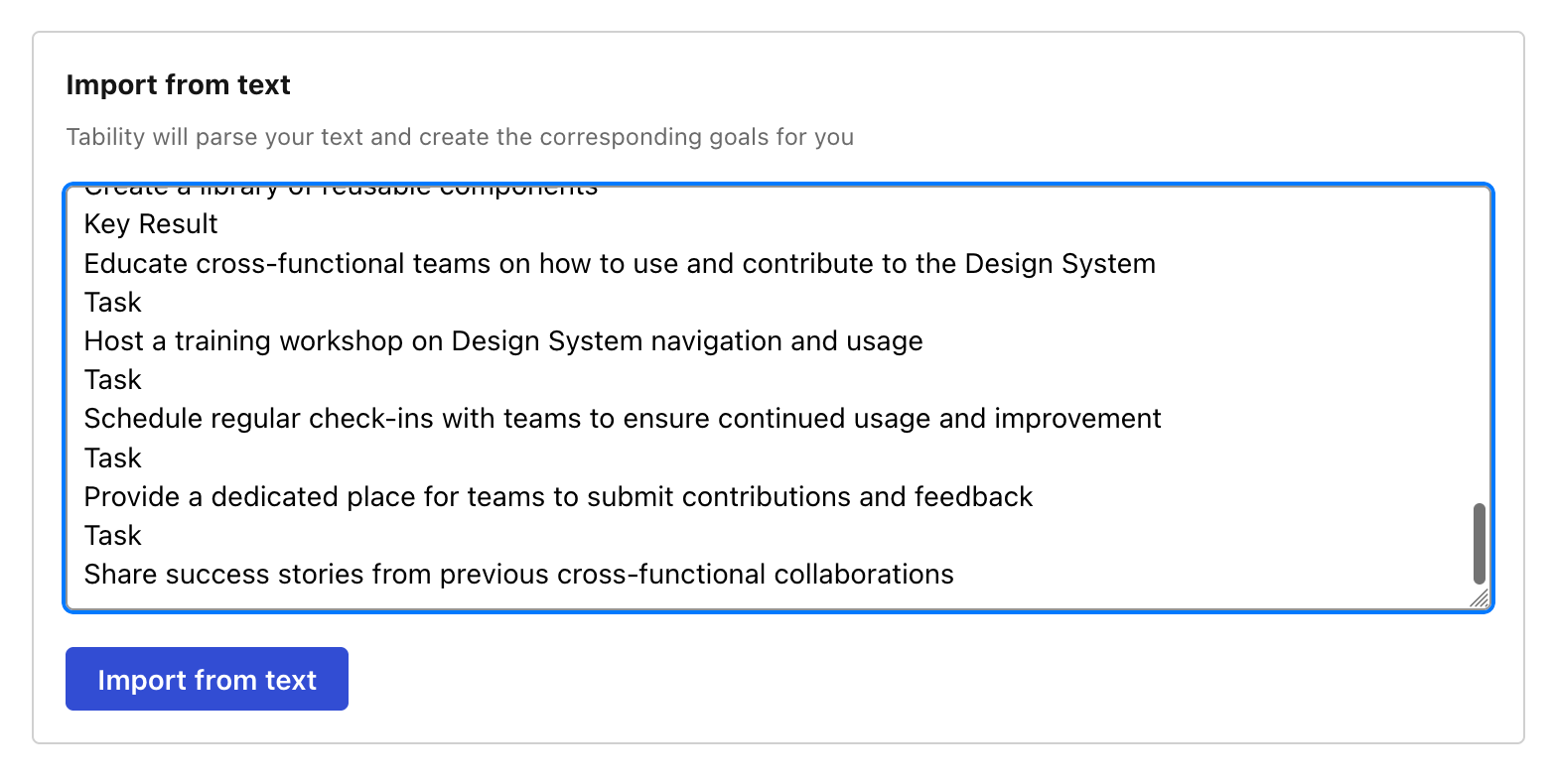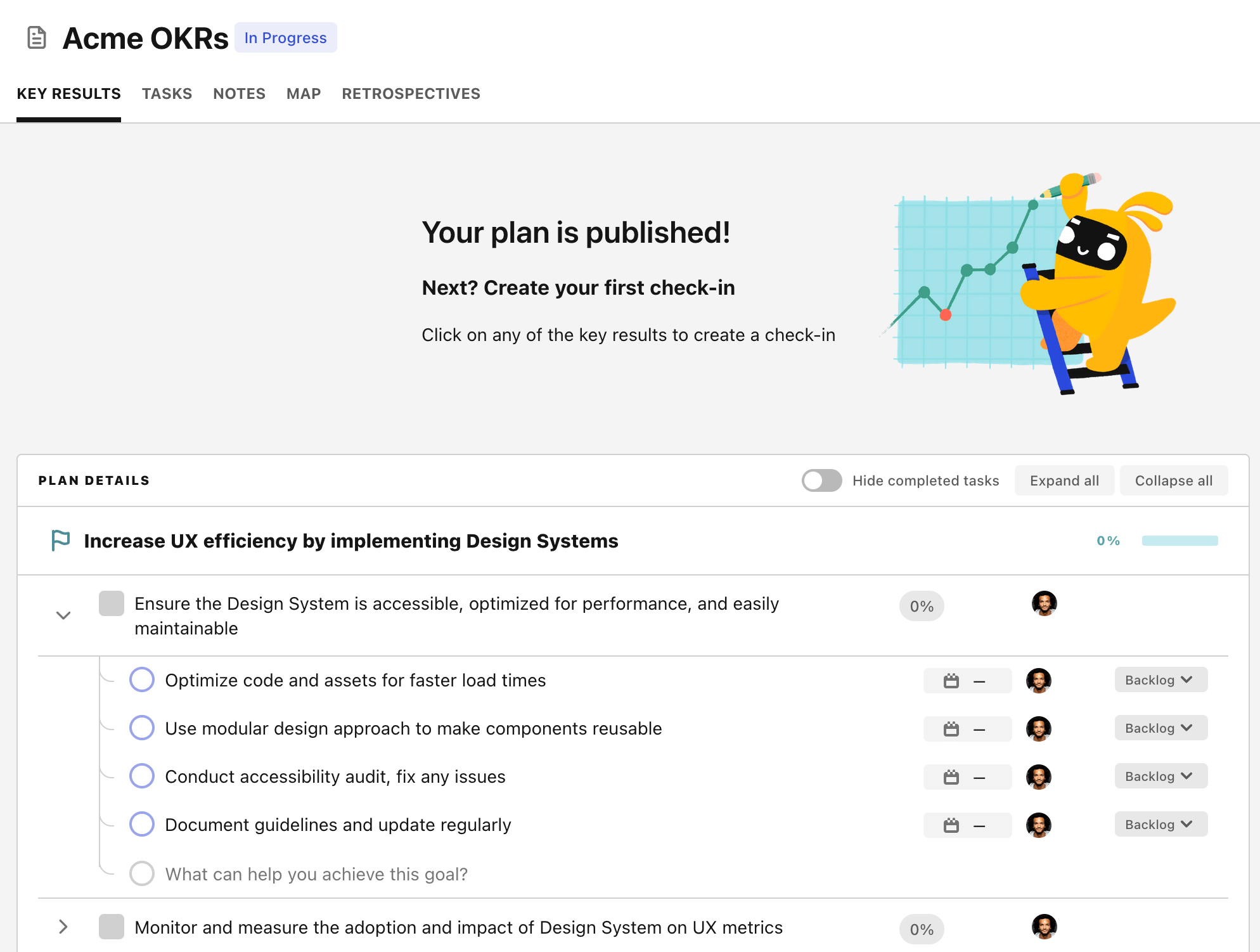OKR template to increase sales to reach the 300,000 OMR target
Your OKR template
Part of reaching the target also involves improving sales team performance via a dedicated sales training program. This endeavor will involve regular training sessions and the development of a tailored curriculum addressing specific needs and weaknesses identified in the sales team. The ultimate aim is to boost sales team performance.
The final aspect of this OKR involves expanding the existing product portfolio with profitable new items. The company will research market trends to unearth potentially profitable items, develop a business case for each selected product and finally, launch the products. This measure will presumably also contribute to increased sales.
With these measures in place, the goal of attaining a 300,000 OMR sales target appears achievable. It necessitates coordinating the activities of the marketing and sales teams, as well as identifying and introducing new, profitable products within the market.
ObjectiveIncrease sales to reach the 300,000 OMR target
KRLaunch two major marketing campaigns to attract potential customers
Identify target audience and tailor campaign message
Implement, monitor and refine campaigns
Design, create and test advertising materials
KRImplement a sales training program to improve sales team performance
Schedule regular training sessions for the sales team
Develop a tailored training curriculum addressing those needs
Identify the specific needs and weaknesses of the sales team
KRBoost product portfolio by adding new profitable products
Implement product launch strategies after product approval
Research current market trends to identify potential profitable products
Develop a business case for each selected product
How to edit and track OKRs with Tability
You'll probably want to edit the examples in this post, and Tability is the perfect tool for it.
Tability is an AI-powered platform that helps teams set better goals, monitor execution, and get help to achieve their objectives faster.
With Tability you can:
- Use AI to draft a complete set of OKRs in seconds
- Connect your OKRs and team goals to your project
- Automate reporting with integrations and built-in dashboard
Instead of having to copy the content of the OKR examples in a doc or spreadsheet, you can use Tability’s magic importer to start using any of the examples in this page.
The import process can be done in seconds, allowing you to edit OKRs directly in a platform that knows how to manage and track goals.
Step 1. Sign up for a free Tability account
Go tohttps://tability.app/signup and create your account (it's free!)
Step 2. Create a plan
Follow the steps after your onboarding to create your first plan, you should get to a page that looks like the picture below.

Step 3. Use the magic importer
Click on Use magic import to open up the Magic Import modal.
Now, go back to the OKR examples, and click on Copy on the example that you’d like to use.

Paste the content in the text import section. Don’t worry about the formatting, Tability’s AI will be able to parse it!

Now, just click on Import from text and let the magic happen.

Once your example is in the plan editor, you will be able to:
- Edit the objectives, key results, and tasks
- Click on the target 0 → 100% to set better target
- Use the tips and the AI to refine your goals
Step 4. Publish your plan
Once you’re done editing, you can publish your plan to switch to the goal-tracking mode.

From there you will have access to all the features that will help you and your team save hours with OKR reporting.
- 10+ built-in dashboards to visualise progress on your goals
- Weekly reminders, data connectors, and smart notifications
- 9 views to map OKRs to strategic projects
- Strategy map to align teams at scale